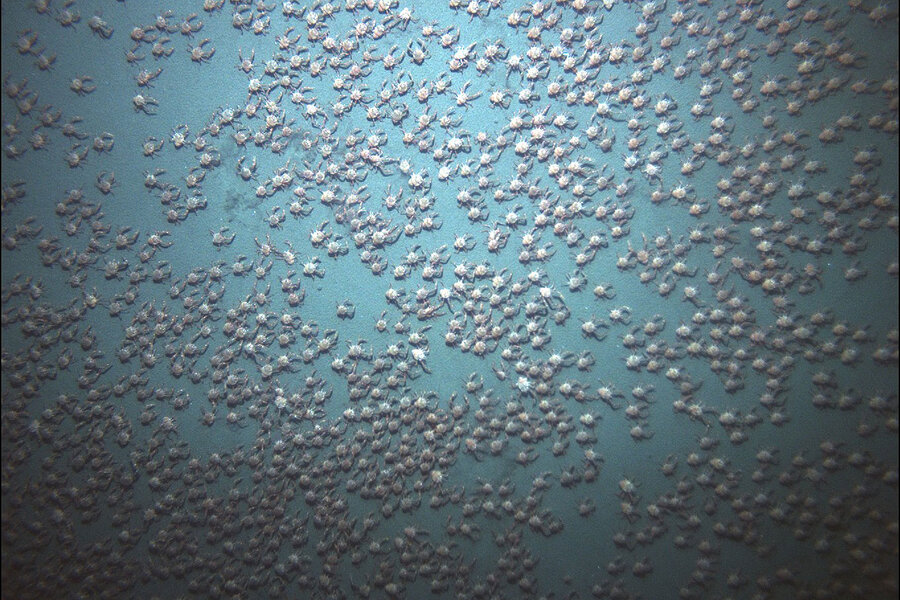Weird 'cloud' of crabs off Panama baffles scientists
Loading...
A shadowy, shifting swarm of crabs swimming near the ocean floor astonished scientists and served as a reminder of how many discoveries are yet to be made in the ocean's depths.
Scientists from the Woods Hole Oceanographic Institution in Cape Cod, Mass., discovered the crab migration in April 2015, while conducting a series of 26 deep-sea dives to seamounts off the coast of Panama. They were investigating why the underwater volcanoes attract such a diversity of marine life. While diving via submarine, they saw stingrays, octopuses, and sea turtles, and on their last dive, they found crabs – thousands of them.
"When we dove down in the submarine, we noticed the water became murkier as we got closer to the bottom," said Jesús Pineda, a biologist at Woods Hole, in a press release. "There was this turbid layer, and you couldn't see a thing beyond it. We just saw this cloud but had no idea what was causing it."
The crab swarm surprised the researchers both in location and activity. Red crabs usually swim further north, closer to California than to Panama. A more typical red crab sighting came last summer, when thousands of red crabs washed ashore near San Diego, as the Los Angeles Times reported.
"No one had ever found this species that far south," Dr. Pineda said. "To find a species at the extreme of their range and to be so abundant is very unusual."
According to the paper published Tuesday in the journal PeerJ, the swarming crabs sometimes "jumped" and swam several inches before landing among their fellows, apparently taking no notice of the observing submarines or passing eels.
This swarm behavior is the first of its kind.
After he returned from the dive mission, Pineda scoured the scientific literature for accounts of underwater swarming, he told the Guardian. He investigated not only crabs but also lobsters, shrimp, and other bottom-dwelling creatures, but he came up empty. No one had ever recorded anything like it.
“Nothing like this has ever been seen, where we have this very dense swarm at the bottom,” Pineda told the Guardian. “We have no idea why they might be doing this.”
In their paper, the researchers speculated that warm water related to the current El Niño pattern in the Pacific Ocean could impact both the red crabs in California and the Panama swarms. The El Niño had not yet been declared in the spring of 2015, but some research suggests that a warm ocean current can precede a more traditional El Niño.
Pineda says he and his colleagues are working to return to Hannibal seamount to investigate why these crabs formed a swarm.
"In other regions, these crabs migrate daily," he explains in an email. "During the day, they are found at depth, whereas at night, they swim up, and can be found near the surface of the ocean. My hypothesis is that the swarms represent a 'school' of crabs that settled down."
Such discoveries illustrate the important role of undersea observations in oceanography, said Pineda.
"This phenomenon could not have been predicted," he said in a video. "You had actually to be there to see."








